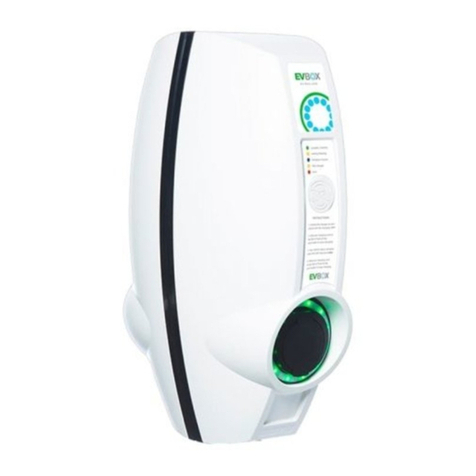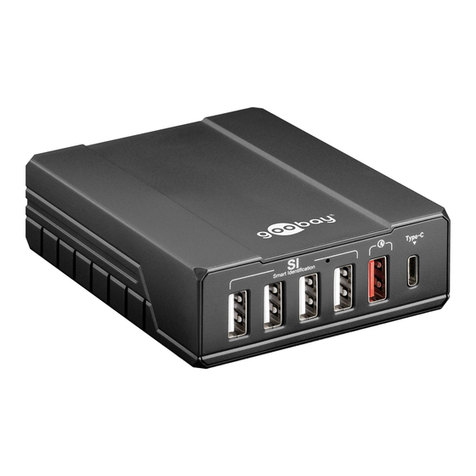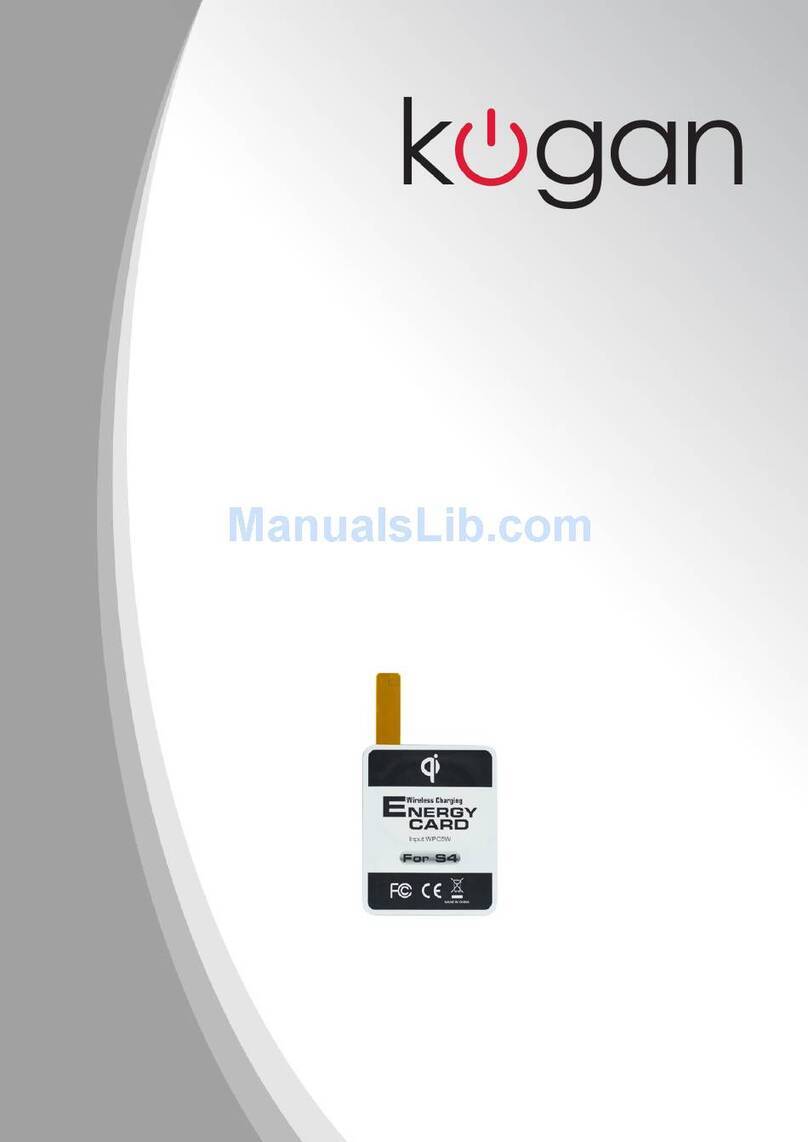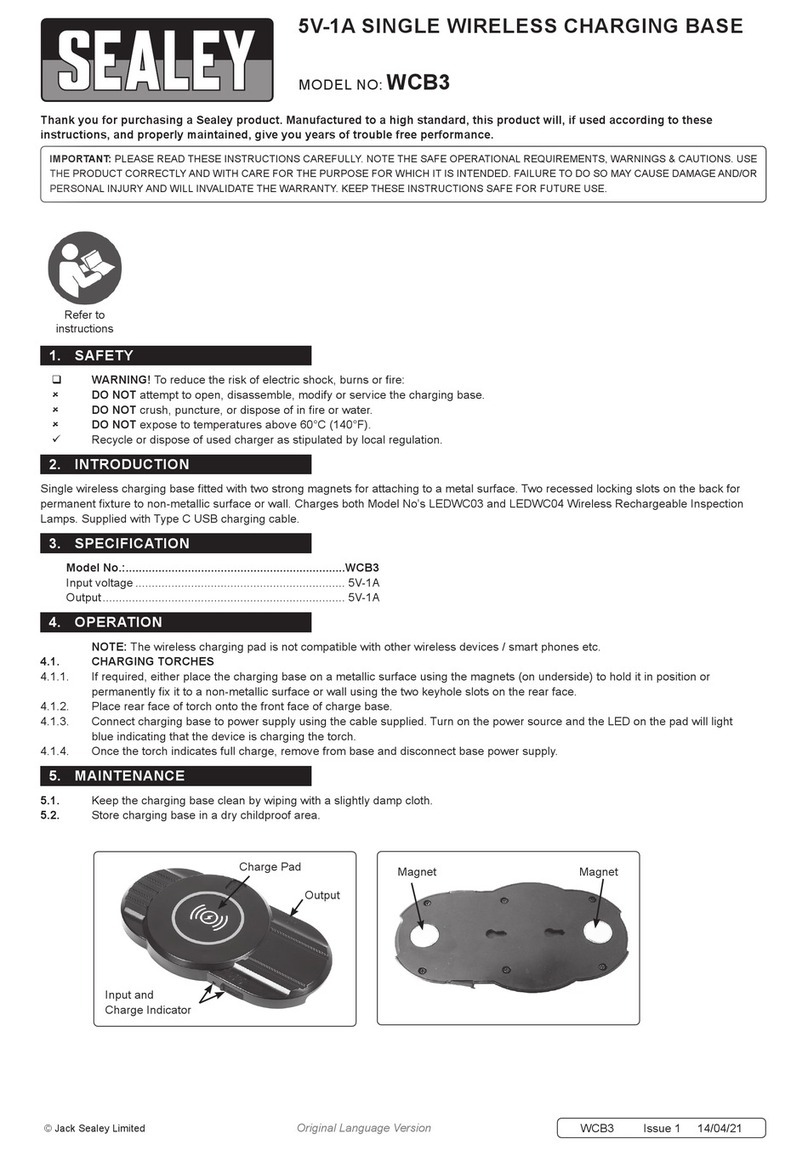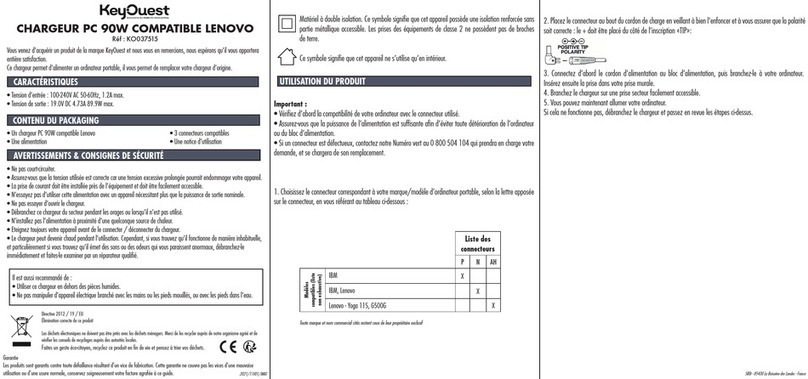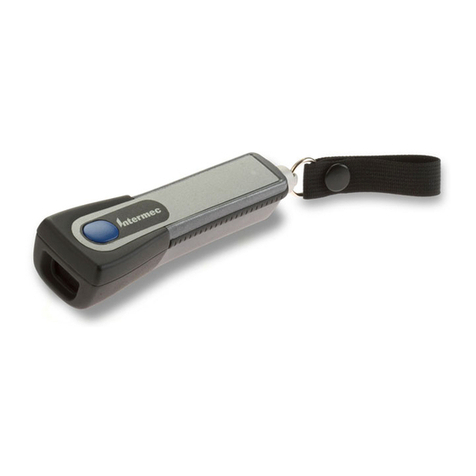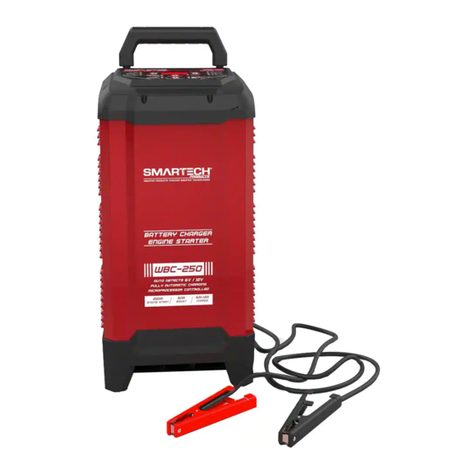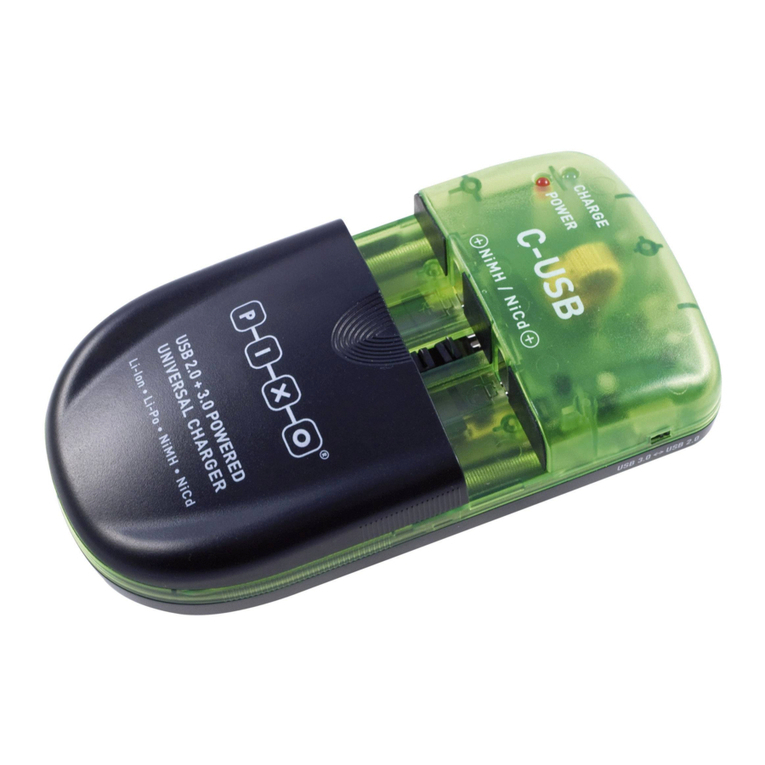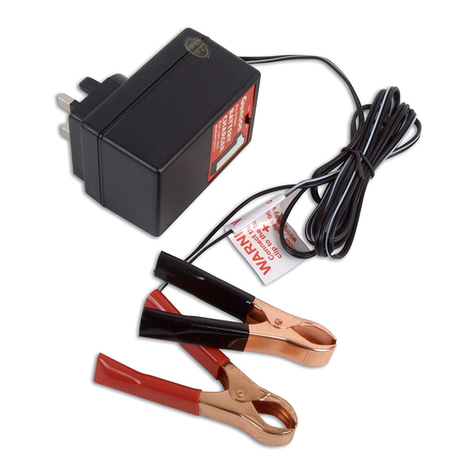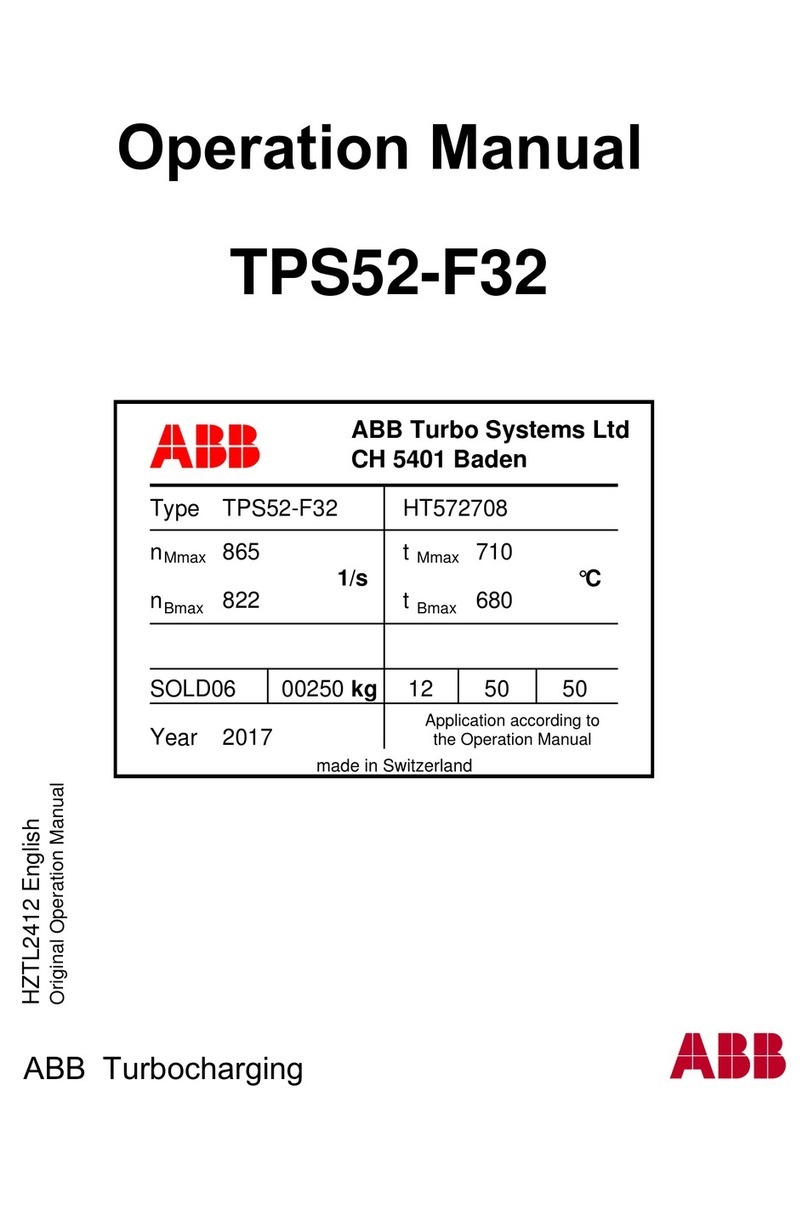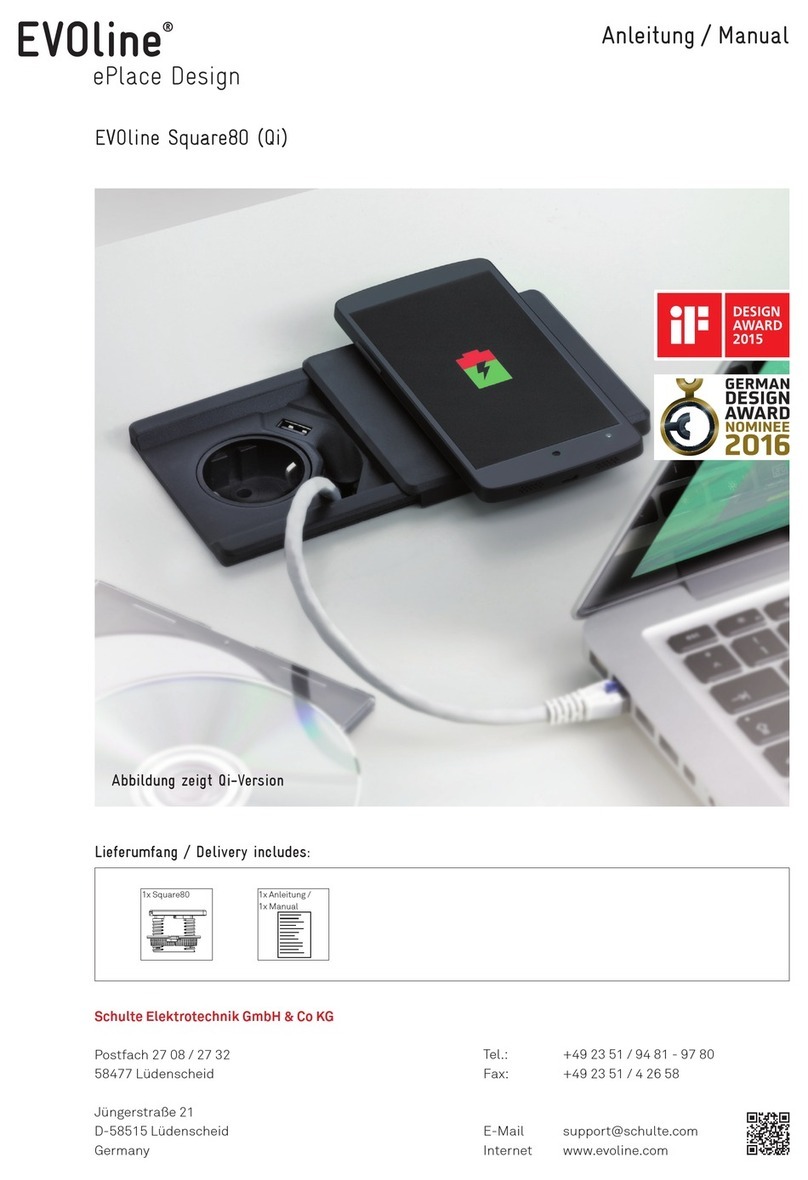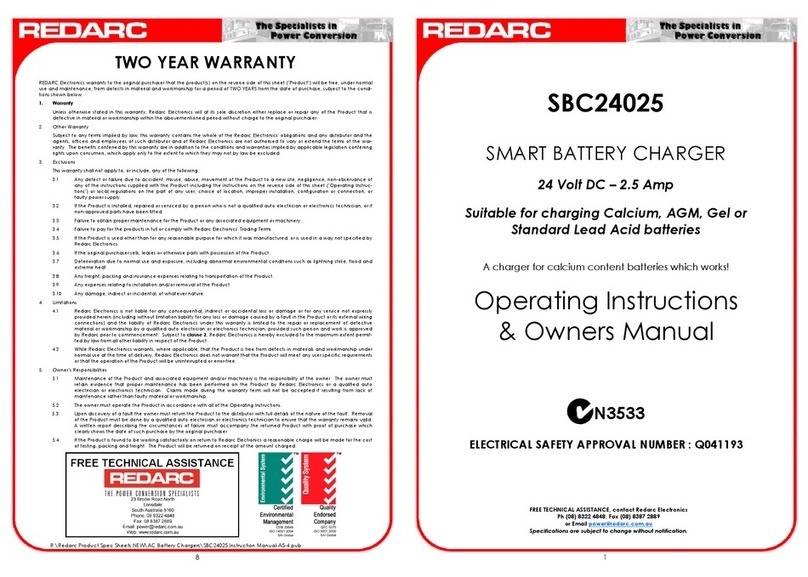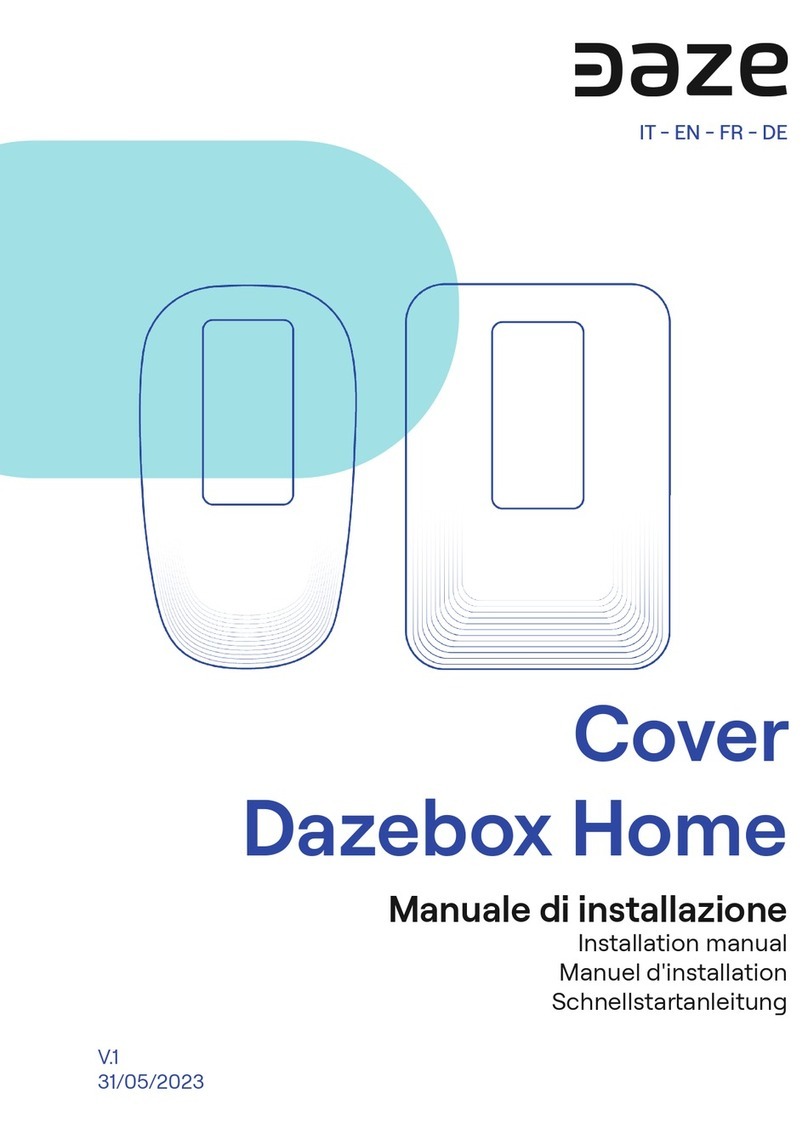RAB EVC48 User manual

Welcome
EVC48
Smart Charging Station
INSTALLATION INSTRUCTIONS

2
Safety Instructions
Read all Important Safety Instructions as well as charging instructions in your vehicle
owner’s manual before attempting to charge your electric vehicle. Failure to do so can
result in death or severe injury. Save this user manual for future reference.
There are many safety features built into the charger. Read all the safety information
and warnings in this manual to avoid any risks or hazards and risks associated with
using this charger.
When using electric products, basic precautions should always be followed.
This manual contains important instructions, including the following, which must
be followed during installation, operation and maintenance.
• Do not install or use the charger near flammable, explosive, corrosive, or
combustible materials, chemicals, or vapors.
• Turn off the input power of the charger before performing any maintenance on
the charger.
• The device is designed only for vehicles that are compatible with the SAE J1772
Level 2 charging standard.
• Do not use the charger if it is defective, of if it appears cracked, frayed, broken,
or damaged.
• Do not attempt to open, disassemble, repair, tamper with, or modify the charger.
Contact our Customer Service department if you have any questions or require the
replacement or repair of any parts.
• Do not use the charger when either you, the vehicle or charger is exposed to severe
rain, snow, or other severe weather.
• When transporting the charger, handle it with care and do not drag or step on
the device.
• Do not touch the charging connector terminal with any sharp metallic objects, in
order to prevent damage.
WA R N I N G

3
• Do not forcefully pull the charging cable, damage it with sharp objects, or place
fingers or insert foreign objects into any part of the charging connector.
• Risk of explosion. This device has arcing or sparking parts that should not be
exposed to flammable vapors.
• Risk of electric shock. Do not remove the cover or attempt to open the enclosure
of this device. There are no user-serviceable parts inside. Contact a qualified service
company if you require any service repairs.
• To reduce the risk of fire, connect only to a circuit provided with 60 amperes
maximum branch circuit overcurrent protection in accordance with the national
Electrical Code, ANSI/NFPA 70, and the Canadian Electrical Code, Part I, C22.1
• This charger should be installed, adjusted, and serviced by a qualified electrician or a
person familiar with the construction and operation of this type of charger and the
dangers involved. Failure to observe this precaution could result in damage to the
charger, or even severe injury or death.
• Incorrect installation and testing of the charger could potentially damage either
the vehicle’s battery and the charger. This type is damage is not covered by our
warranty policy.
• Ensure that the charging cable is well-positioned during the charging process, to
avoid the cable getting stepped on, tripped over, or subjected to damage or stress.
• Do not use this charger with a frayed charging cable having damaged insulation or
any other sign of damage.
• Ensure that the wire type, diameter, current rating, and temperature rating comply
with the local electrical standards and requirements in your local area.
• Before starting the installation, turn off all power.
• For permanently connected equipment, protective grounding and bonding
terminals-field wiring terminals for connection of equipment-grounding conductors
are identified by: “G,” “GR,” “GND,” “Ground,” “Grounding” or the ground symbol,
either on a wiring diagram provided on the unit, or a marking on the wiring diagram
attached to the unit.
• This device should be supervised when used around children.
• Do not put fingers into the electric vehicle connector.
• The device is not to be lifted or carried by either the flexible cord or the EV cable.

4
Contents
AC charger
(with charging cable)
Wall-mount bracket
and inlet box
Expansion
screw ×4
M5 self-tapping
screws ×4
Torx / T30
L-wrench
M5 screw ×5
Product
Certification
RFID card ×2Installation
instructions
Welcome
EVC48
Smart Charging Station
INS TA LL AT I ON INS T RU C T I ON S
WE’R E HER E TO HEL P:
1(888)722-1000

5
Tools and Materials
Required
Tools required before installing the charger onto the Wall-Mount Bracket are:
• Wire stripper
• Crimpers for ring terminals
• Phillips screwdriver for M4 – M6 1-3/8 inch or 34 mm drill bit
• Voltmeter or digital multimeter (for measuring AC voltage at the installation site)
• The inserting cable should meet the best waterproof performance requirements.
It is recommended to use a 3 core/ 6AWG or 14mm2 cable (XLPE-90°C, THHN-90°C, or
equivalent) to pull the cable from the distribution box. The maximum outer diameter
of the cable should be 16mm–23mm.
• Level ruler
• Pencil or marker
• Machine drill
• Ring terminal (recommend type 14-5) for 6 AWG wire, and fixed by M5 slotted
head screw
• It is recommended to use 1-inch watertight flexible metal conduit compliant with
NEMA 4 class.
• Slotted head screwdriver for M5
Wall-Mount Bracket
Installation Requirements
Before installing the wall-mount bracket, you should confirm that the loading capacity
of the wall can reach a weight of 88 lbs. When installing on a cement wall, you can use
the included expansion screw to install the bracket and use a cement drill to drill holes
on the cement wall (Ø8mm).
When installing on a wooden wall, you can directly use the included M5 self-tapping
screws to install the wall-mount bracket and use the wall-mount backplane to lock
and install on the wall directly.

6
EVC48 Installation
Requirements
To select the best location and position to install the wall-mount unit, you should first
determine the parking position of the vehicle to ensure the charging connector can
be easily inserted into the vehicle charging inlet.
The wall-mount unit should be located:
• In a well-ventilated area. Avoid installing in closed boxes or near to
exothermic chargers.
• 4 feet above the floor.
• 10 inches from any obstacles to allow cables to loop around the wires and to allow
related maintenance.
• If in an enclosed garage, on the side of vehicle charging inlet.
Warning for WiFi and 4G versions
Due to different congenital environments, it is recommended to first conduct WiFi and
4G module network signal tests before finalizing your settings. It is recommended that
the RSSI (Received Signal Strength Indication) value should be higher than -65dBm. If it is
lower than this value, it may result in a weak WiFi or 4G connection or disconnection
due to external interference in the area.

7
Setup & Installation
Installation of the wall-mounted
metal plate
Take out the wall-mounted metal plate and locate all the installation holes.
Use as a template to mark on the wall with a pencil or any tool, and insert
4 sets of expansion bolts (M5 X 40mm) into the wall, as shown in the figure.
Install the wall-mounted metal plate on the cement wall.
1

8
Setup & Installation (cont’d)
Installation of the wire box
First, remove the waterproof cover at the inlet end marked as “AC In”. Then,
install the accessory “1-inch liquidtight flexible metal conduit” at the inlet of
the power cord, and attach the wire box to the wall-mounted metal plate
with screws.
2
Installation of the AC power cord
The cross-sectional area of the three power cords should be AWG 6 or
14mm2. The power cords should be fully crimped and connected with ring
terminals. The ring terminals should be attached to the wire box with M5
screws, with a tightening torque of 40kg-cm. Refer to label on the wire box
for the correct positions, where the positions are L1/L, GND/PE, and L2/N,
respectively, from the left to the right.
3
G/PEL/L1 N/L2

9
Setup & Installation (cont’d)
Installation and setting of the
network cable
Remove the waterproof plug from the Internet interface at the bottom left of
the wire box. Feed the network cable into the wire box through the network
cable entrance. Once the network cable is in, insert the RJ45 connector into
the connection port on the back of the charger.
4
Setting of the power supply type and
grounding type
There are different settings depending on the LAN and the country where the
machine is installed. For details refer to Power grid connection and grounding
type on page 17.
5
1 2

10
Setup & Installation (cont’d)
Installation of the SIM card
Only available for 4G models
Note: Confirm that the SIM card password has been removed prior to
installation, as the charger post does not support SIM cards with passwords.
6
Installation of the charger
First, connect the network cable to the charger.
Important! The network cable needs to be connected to the correct socket.
7
Table of contents
